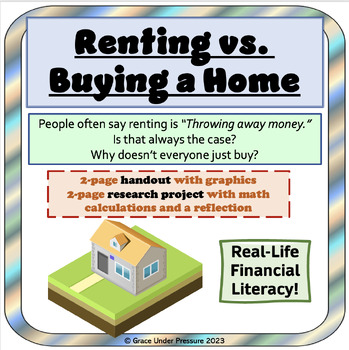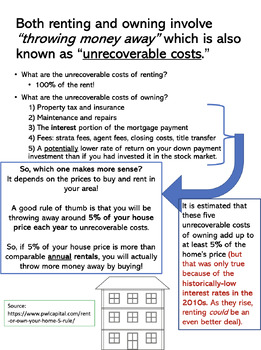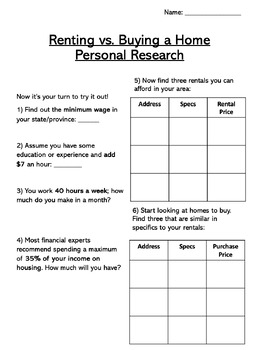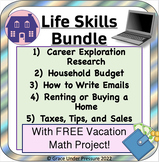Renting vs. Buying: Financial Literacy Lesson (mortgage, interest, down payment)
- PDF
- Easel Activity
What educators are saying
Also included in
- This bundle is appropriate for general high school career and personal planning classes. It could also be used in Special Education Life Skills classes, although please note some of the projects require an understanding of percentages as decimals and other intermediate math skills.Included Products:Price $12.75Original Price $18.75Save $6.00
Description
People often say renting is “Throwing away money.”
Is that always the case? Why doesn’t everyone just buy a home?
This personal financial literacy lesson allows students to think critically about this issue and complete local research to enhance their understanding.
This activity starts with a two-page handout that walks students through the basic vocabulary and concepts of home-buying:
- down payment
- mortgage: principal vs interest (with sample amortization schedule)
- property taxes, condo fees, insurance, and repairs
- unrecoverable costs
Then, the 5% rule to help decide whether to buy or rent is introduced.
Finally, students get a chance to calculate their housing budget based on a fictional salary, find suitable rentals in their area, and compare them to the cost of homes to buy. Depending on where you live, students might find that it is more economical to buy a home (as long as they can come up with a down payment), whereas in other cities with a high cost of living, it is sometimes more economical to rent long term.
They write a reflection to sum up what they have learned.
Students need to use a variety of math skills (multiplying, dividing, and finding the percent of a number) to complete their two-page worksheet.







